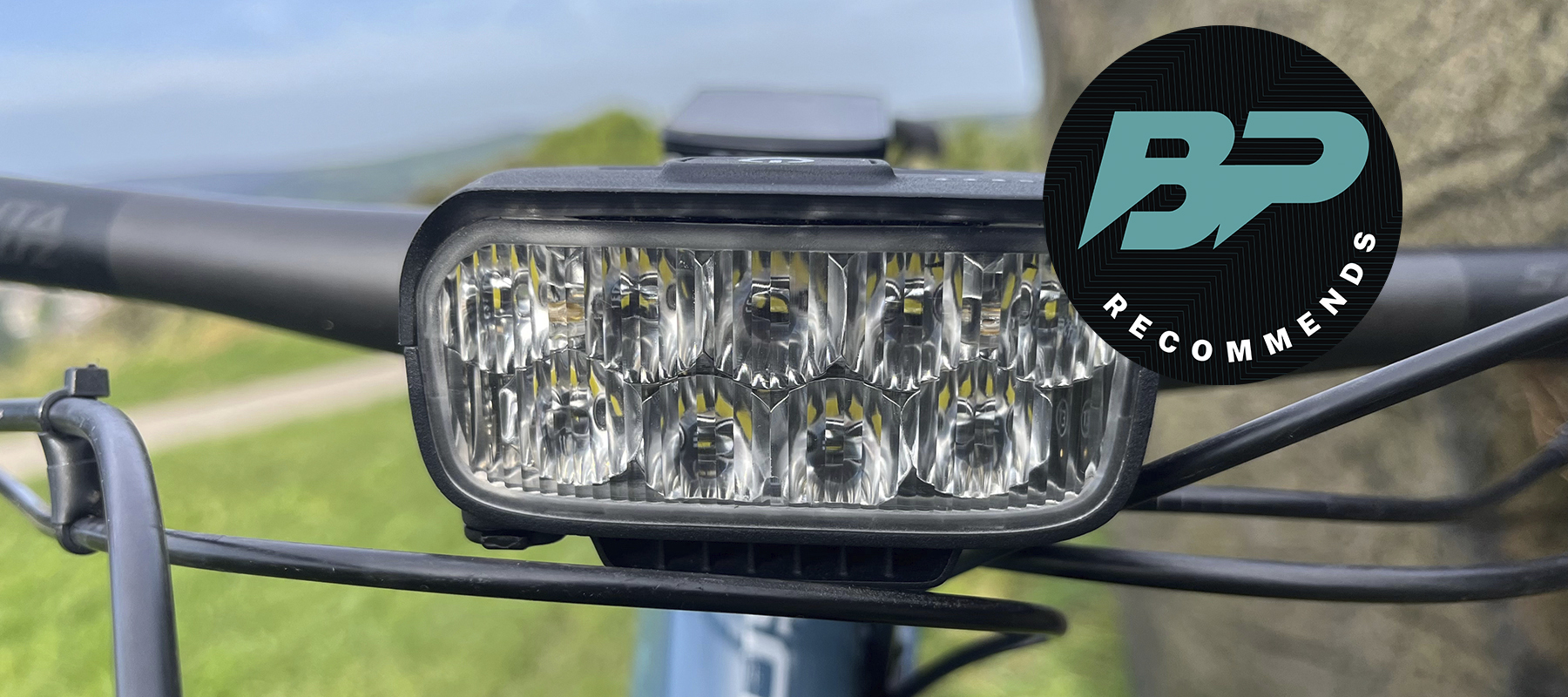Bike Perfect Verdict
A well-made, simple-to-operate, and set up handlebar light that punches a lot higher than its modest lumen figures would suggest. Perfect for those who prefer to spend more time on the trail than fiddling with kit.
Pros
- +
Great beam pattern with gentle fall-off
- +
Simple operation
- +
Run times as advertised
- +
USB C charge-through
- +
All contained in the head unit
Cons
- -
No remote option
Why trust BikePerfect
The Chicago-based Outbound Lighting launched its original trail light in 2017 and now has the updated Trail Evo available separately or combined with the Hangover helmet light in the Downhill Evo package. The Trail Evo is new to us, so it hasn’t yet been featured in our best mountain bike lights article, but after this test, it should definitely be on your list of lights to check out.
Outbound sticks to six core principles when designing lights, and in a nutshell, they are to offer reliable, safe lights with suitable beam patterns for the intended use and realistic lumen output and run times. Their site has a great section about lumens, how the bike industry's general thinking that more is always better is flawed, and how they are rated using the FL1 standard. In accordance with this standard, the advertised lumens are actually only the average lumen output for the first three minutes of power.
This means a light can have a “FL1 certified” lumen value of 2,500 lumens and a runtime of 40 minutes. One would assume 40 minutes of 2,500-lumen output, but the high 2,500-lumen output only has to be available for 4-5 minutes to meet the FL1 standard. The FL1 standard was originally just for the US market but is now widely used as an LED flashlight standard and certainly gives food for thought on claimed outputs, especially those that never seem quite as bright as you'd expect.
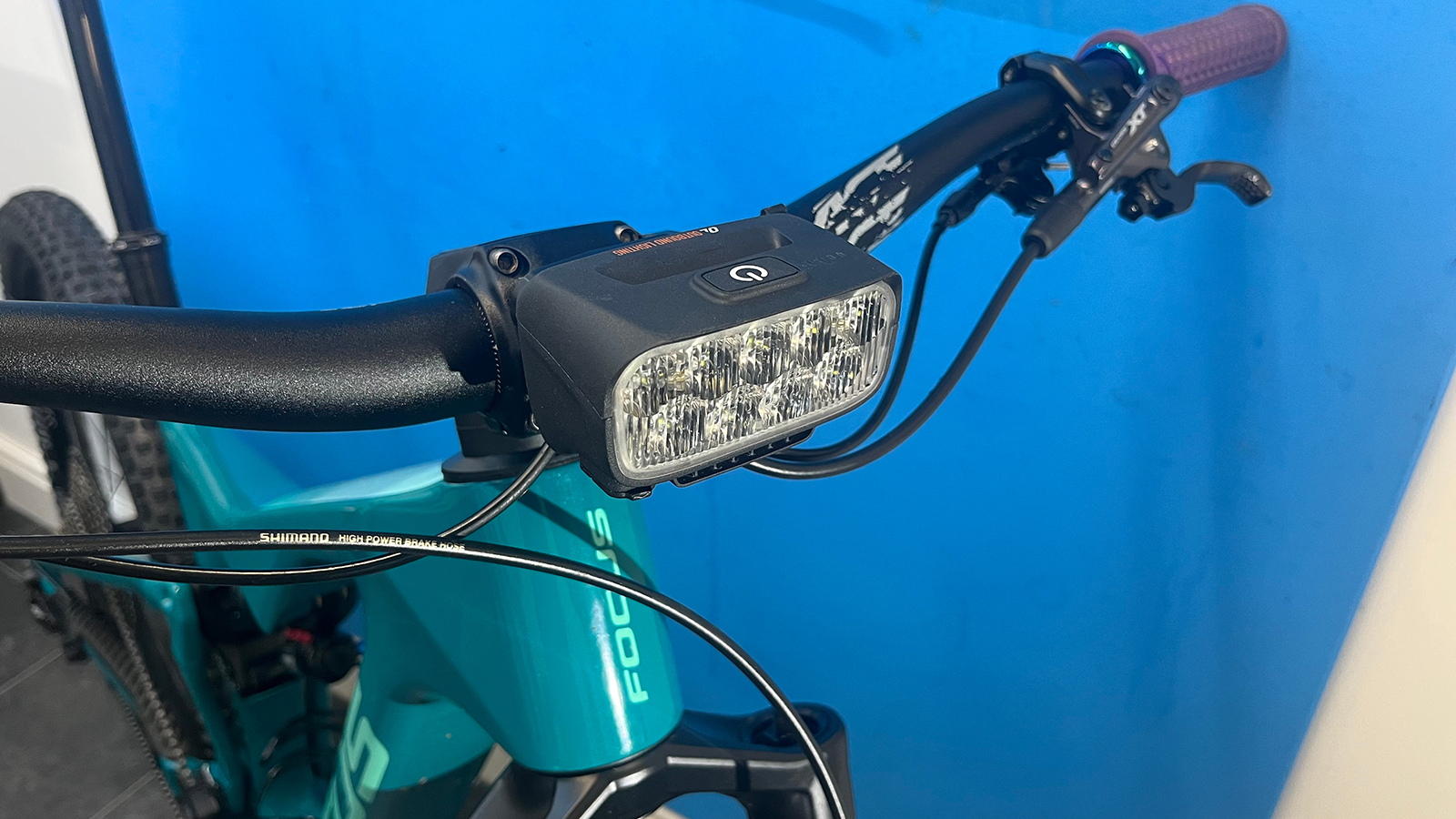
Design and specification
The first thing that struck me when opening the fully recyclable box was how little there was in it. There are no awkward battery packs, fiddly cables, or multiple silicone strap fittings – just the light, handlebar bracket, and a USB-C charging cable. It has a reassuringly chunky feel to it, but considering it has nine LEDs and its battery, it's surprisingly compact.
Fitting is a simple task – simply attach the bracket to your bar and tighten it up with a 2.5mm Allen key. It has a handy thumbscrew on one side to adjust the angle of the light separately from the clamp, and the light clips on and off the bracket using a simple lever on the side of the attachment. The bracket looks very similar to the attachment method used for expensive camera tripods. The main body uses a rubberized magnesium cover with a peak to prevent glare when standing over the front of your bike and to help from blinding oncoming traffic, and they say the light should be set up with this peak level to the ground.
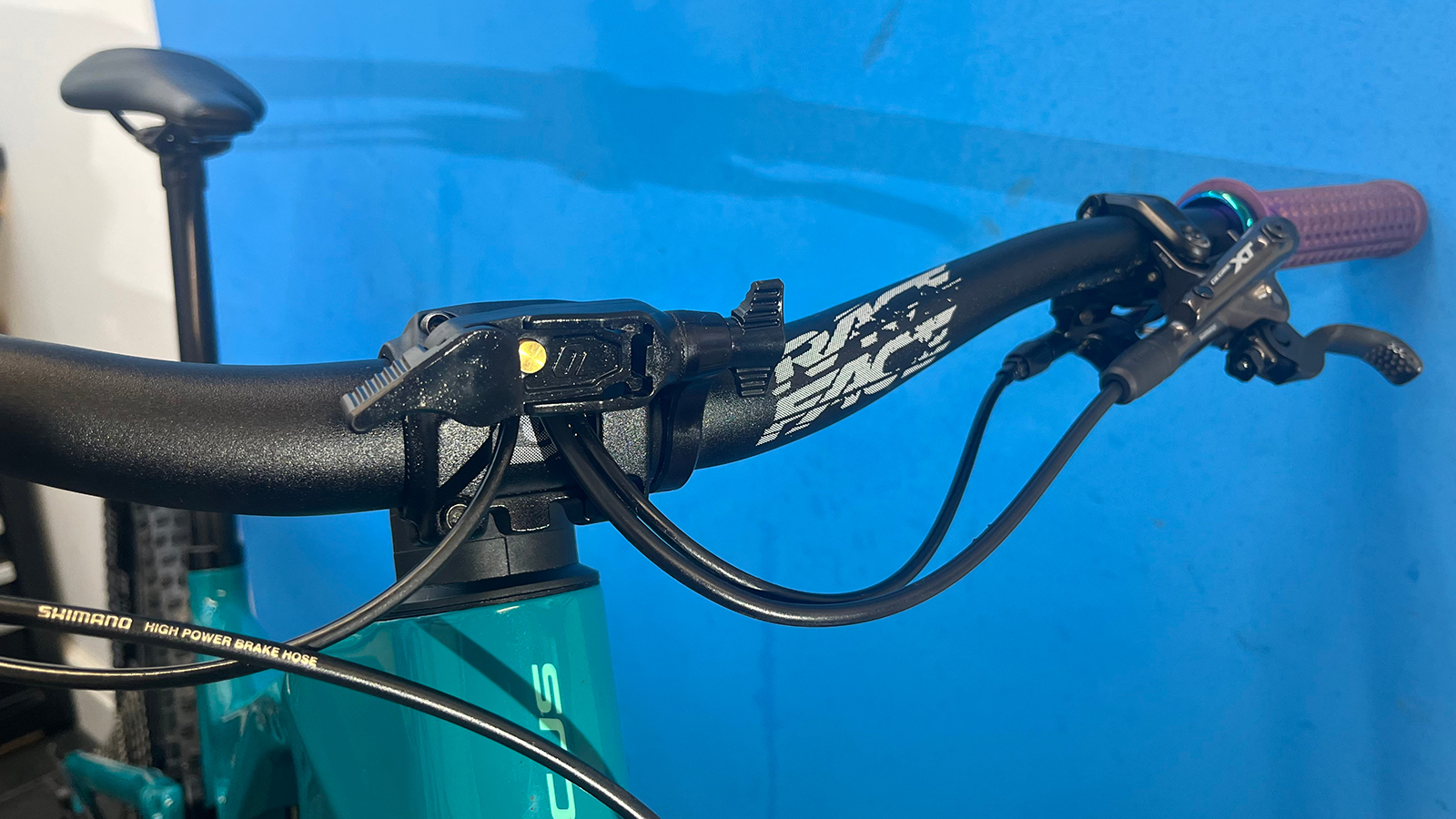
The magnesium-shelled head unit weighs in at 275g and houses nine LEDs behind a high-clarity PMMA lens that gives out up to 2,200 lumens, and the battery, which is made up of two LG 21700 M50LT cells, gives a 104-minute run time on full charge and up to 500 minutes on lower power modes. Charging is taken care of by using the supplied USB-C cable that simply attaches to the underside of the light. It can be charged on or off the bike easily, and the USB-C fitting means getting replacement cables is super easy.
Outbound doesn't like to base light performance purely on lumen values, and the max output of 2,200 wouldn't win you any bike light Top Trump battles. Instead, they concentrate on beam patterns and performance, and the Trail Evo has the widest beam pattern of any light I've ever used with a really soft faded edge, which is as close to daylight as possible. Outbound says this is due to the TIR (Total Internal Reflection) optics, which they created after hundreds of simulations using Lucidshape software. This let them adjust the design to achieve peak brightness, falloff, and peripheral coverage.
Amongst the brand's six core design principles is heat management. A high-powered LED unit generates a lot of heat, leading to a drop in performance or even complete failure in extreme cases. Outbound deals with this in a couple of ways. The head unit itself has large exhaust vents at the top of the light, and the choice of a magnesium-cast body has lower heat conductivity than a similar alloy or plastic unit, which both lead to consistent performance out on the trail.
Modern super-lights have a tendency to be overly complicated, with various modes, switches, and options, but that's far from the case here. The simple unit uses one large, thick, glove-friendly button on the top that controls four modes. When you first switch it on, it is automatically in what's called adaptive mode, which is a clever, smart mode that starts at maximum output for five minutes, then slowly, over the course of 30 minutes, it will drop the power to the medium mode whilst your eyes adapt to the dark conditions so you save battery but without noticing any change in performance. The other modes are standard high, medium, and low solid outputs, and all feature a 20-minute get-you-home feature that will drop the power to prevent a sudden switch-off. There are four green lights on the top of the unit to let you know how much battery is left.
The Trail Evo also features pass-through charging via the USB-C port, which means you can charge the light whilst using it with any suitable power source. So, for long-distance riders and overnight racers, you can carry a power pack to keep your lights running through the night without removing them from your bars. And if you have one of the latest Fazua motors or your Shimano EP8 or EP801 switch has an additional USB-C port like the Focus Jam2 7 series pictured below, you can run the light off the existing e-MTB battery, should you need the extra run time.
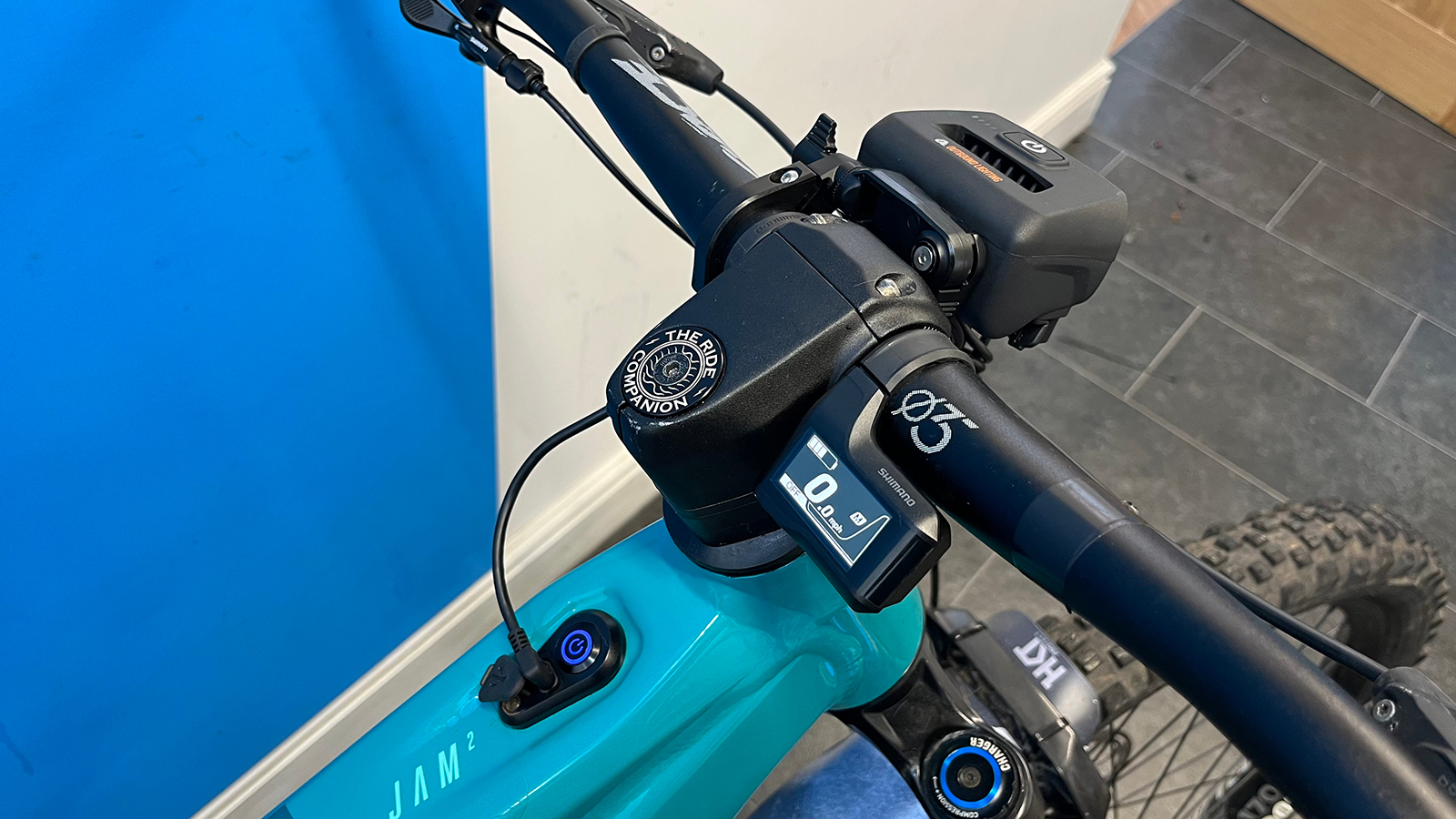
Performance
I'm a big fan of products that work with minimal fuss and maximum performance, and the Trail Evo does exactly that. The bracket easily fits 31.8 and 35mm bars and is solid, very secure, and easy to use. A cable management system is also available to keep hoses and cables tidy and rattle-free from the light, but I didn't need to use it on the two bikes I used during testing.
Most of my night rides are generally around the two-hour mark, and I found the advertised run time of adaptive mode of 2.6 hours was spot on, and that when left on in a workshop test, it actually kept working for nearly four hours, with no discernible difference in run time in temperatures down to around six degrees. I'd occasionally use the full power option for technical descents, but I'd generally put it in adaptive mode and just get on with riding.
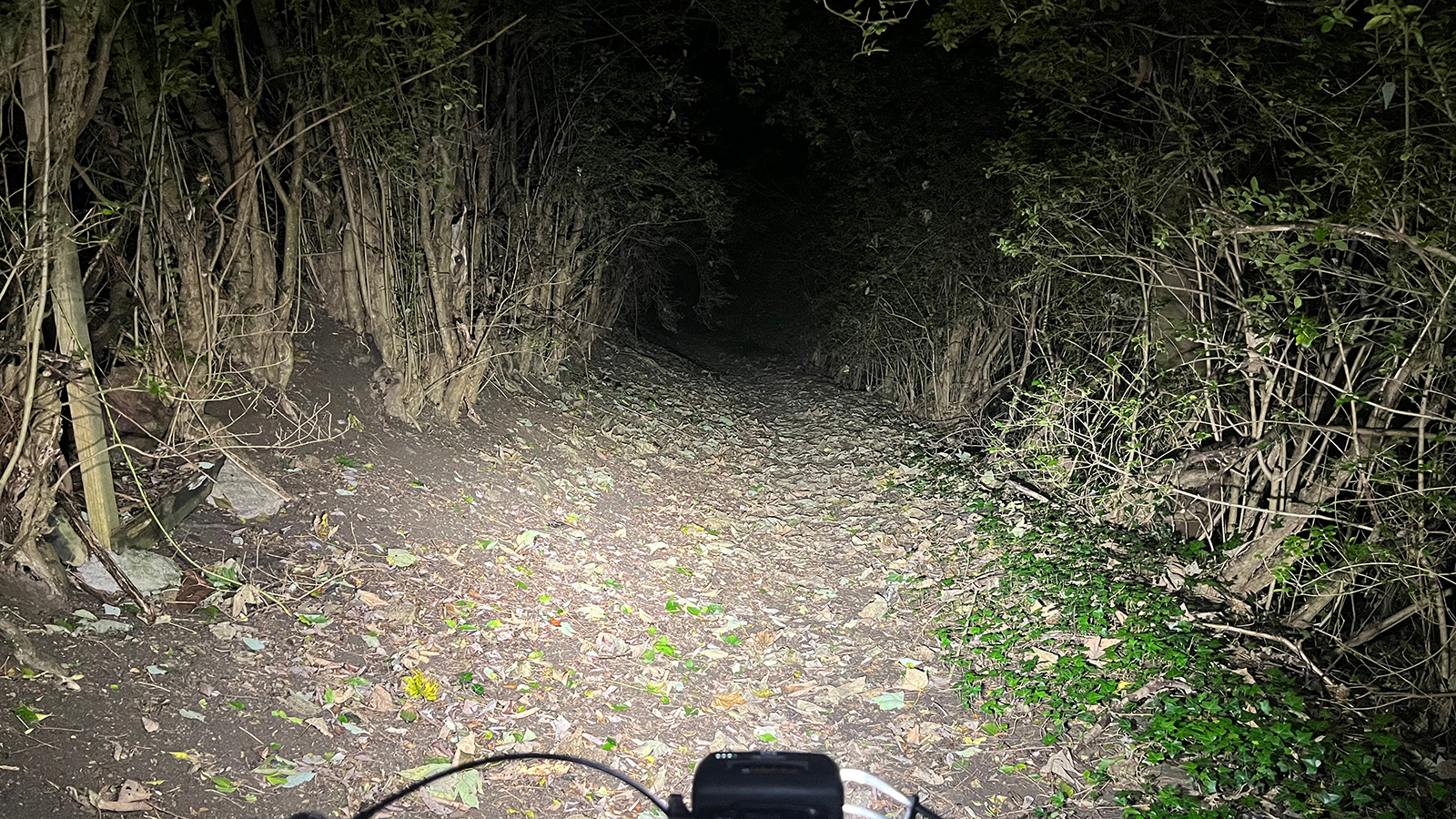
The beam pattern is super wide and worked brilliantly on various trails. Brands often claim to have lights that turn night into day, but these are as close to that as anything I've ever used. Although the Evo doesn't have a super-high headline lumen figure compared to some, it does a fantastic job of its power using a clever lens and LED placement to create a covering of light that makes it really easy to judge distances and pick out trail features at speed.
The button was easy to use, although the option of running a remote of some kind would be nice for those moments when you can't remove your hands from the grips but need to change power modes quickly. The pass-through charging feature is clever, too, removing another piece of the range anxiety puzzle for those riding an e-MTB at night.
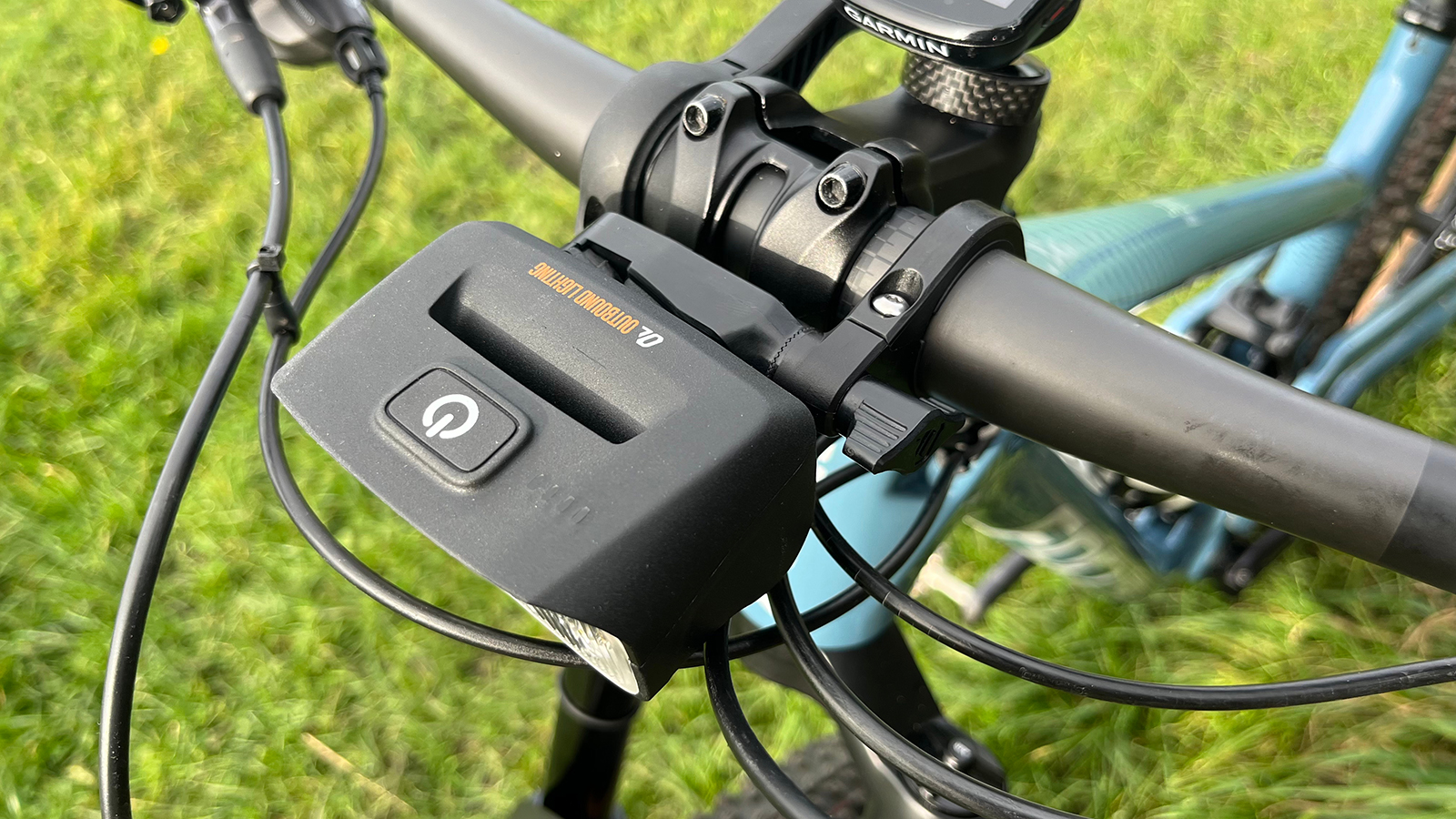
Verdict
The Trail Evo ticks the boxes for what I like in a light, something that is easy to fit, minimal faff, and works as it should, letting me get on with riding. It's a solid, robust setup clearly designed by people who ride bikes, with all the power and clarity you need without any unnecessary complications.
It worked perfectly throughout the test period, with no drops in power, weird charging quirks, or issues with mounting hardware. My only slight criticism would be a lack of a remote option, but at this price point, it really is hard to beat and put many other much more expensive standalone lights to shame.
Tech specs: Outbound Lighting Trail Evo handlebar light
- Price: $245 / £201 / €231.95 (£ and € do not include shipping and customs charges)
- Weight: 275g
- Output: 2,200 lumens max
- Run time: 104 mins on high/ 500 mins on low
- Battery: 2 x LG 21700 M50LT cells
- Lens: High-clarity PMMA lens
- Materials: Magnesium lower shell, high-strength polycarbonate substrate

Neal has been riding bikes of all persuasions for over 20 years and has had a go at racing most of them to a pretty average level across the board. From town center criteriums to the Megavalanche and pretty much everything in between. Neal has worked in the bicycle industry his entire working life, from starting out as a Saturday lad at the local bike shop to working for global brands in a variety of roles; he has built an in-depth knowledge and love of all things tech. Based in Sheffield, UK, he can be found riding the incredible local trails on a wide variety of bikes whenever he can
